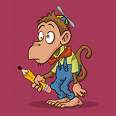
The
Golden Section by Scott Olsen. 2006, ISBN
978-0-8027-1539-5. Subtitled Nature's Greatest Secret. Also, on the cover in small hard (for me) to read print it says "the essential guide to the deepest mystery on earth" and "a little book about the secret of life." This is a little book. It is not tiny, but it is smaller than most hard covers. The entire "Wooden Book" series is the same size. This book has many fine drawings illustrating the various subjects described. The book has 26 chapters and seven appendix. The chapters are each two pages long, with one page of text and one page of drawings. The subject is mostly "phi" (the Greek letter "phi" is used as a symbol for the number) an
algebraic irrational number that appears frequently in nature. "phi" is approximated by the ratio of succeeding
Fibonacci numbers 8/5,13/8, 21/13, etc. It is these Fibonacci numbers that usually are found. "phi" itself is given by the expression (1+sqrt(5))/2. The decimal value is approximately 1.6180339... While this book is mathematical in some of its content it is mostly mystical ideas related to how the numbers occurs in many places. I found this book very interesting to read and if I find the time may read it again. The text however is very terse, each chapter just scratches the surface of an idea before it goes on to another. If you are interested in "phi", but don't have a lot of time, then this book will introduce you the subject. You may find that when you have learned some about "phi" you will want to learn more. Golden Section is sometimes called Golden Ratio.



























